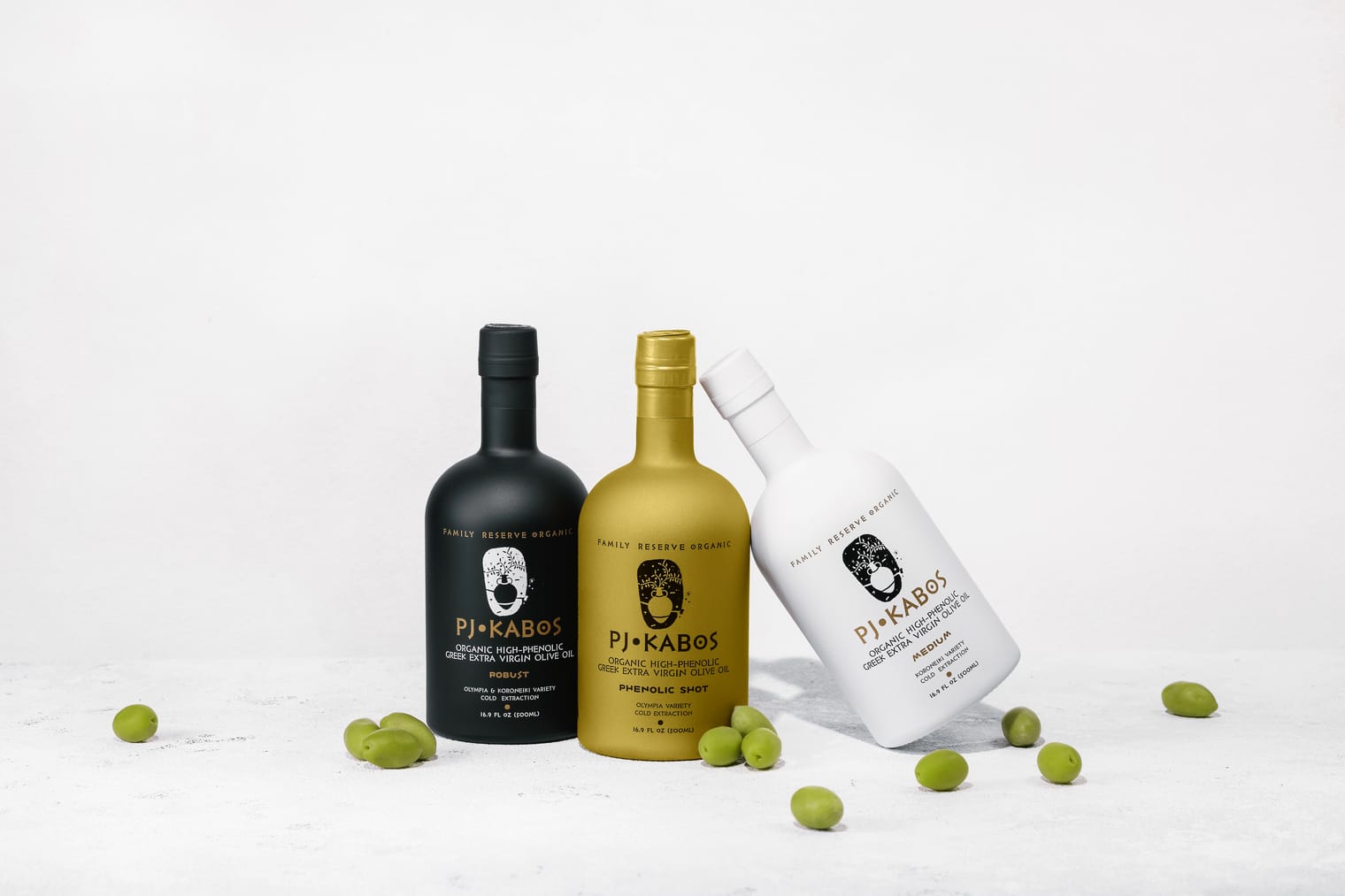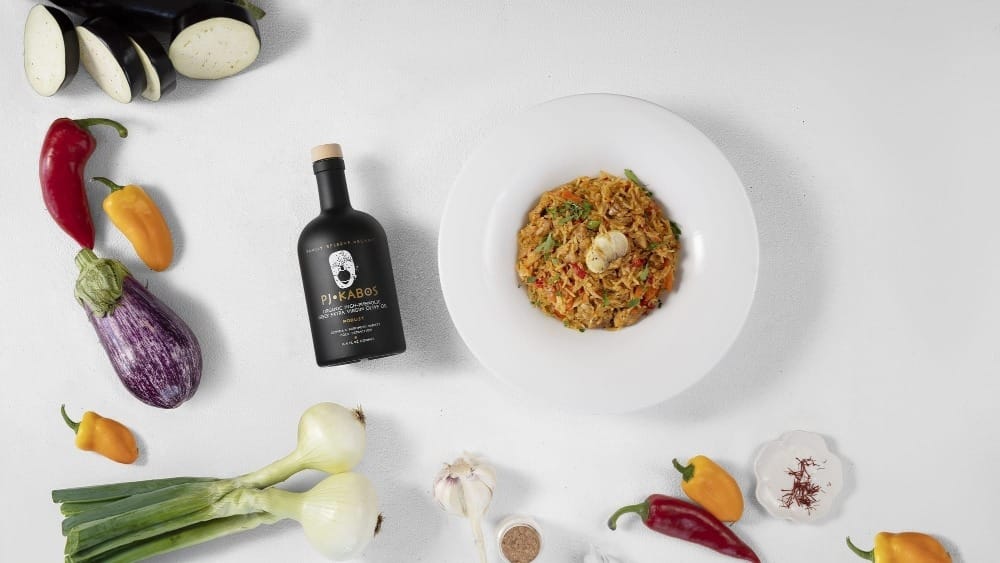Stuffed grape leaves, known as Dolmades in Greek cuisine, have a rich and multifaceted history deeply rooted in the ancient culinary traditions of the Mediterranean and Middle Eastern worlds. This dish, often served with an egg-lemon sauce called avgolemono, exemplifies the Mediterranean's culinary tradition of using simple, local ingredients to create complex and flavorful dishes.
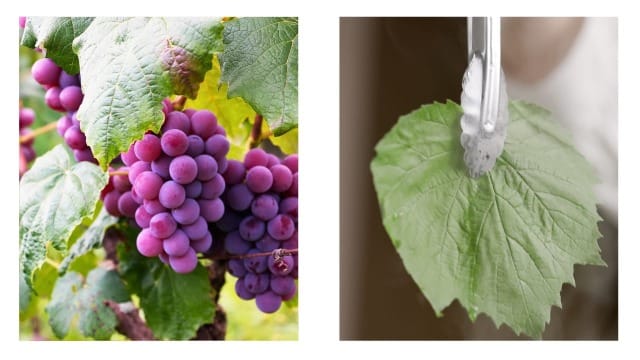
A Short History of Dolmades
The concept of stuffing grape leaves, which is central to dolmades, dates back probably to ancient Persia. The Persian Empire, known for its sophisticated cuisine, popularized the use of grape leaves to encase savory fillings. Persian culinary practices emphasized the harmonious blending of herbs, spices, and grains, a tradition that heavily influenced the surrounding regions.
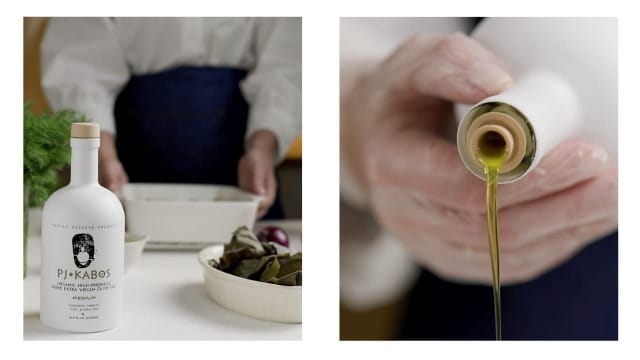
As Persian influence extended across the Mediterranean and into Europe, the practice of stuffing grape leaves spread and evolved. The Mediterranean basin, with its abundance of grapevines, was a fertile ground for the adoption and adaptation of this dish. Over time, various cultures in the region, including the Egyptians, Greeks, and Romans, incorporated their local ingredients and culinary techniques, creating diverse versions of stuffed grape leaves.
Culinary Legend
According to some culinary legends, Alexander the Great first encountered stuffed grape leaves during his siege of Thebes, Egypt. This experience purportedly led to the spread and popularization of the dish throughout the Mediterranean as his armies moved across the region. While this story is more legend than documented fact, it illustrates the historical exchanges that have shaped this dish.
The term "dolma" itself comes from the Turkish word "dolmak," which means "to fill." While the Ottoman Empire played a significant role in spreading the dish throughout its extensive territories, it's important to recognize that the roots of dolmades lie in the ancient culinary traditions of the indigenous peoples of these regions.
Evolution of Dolmades in Greek Cuisine Today
In Greece, dolmades have become a beloved meze (appetizer) or main dish. Greek dolmades are typically vegetarian, filled with rice, pine nuts, onions, and herbs like dill, mint, and parsley. However, variations exist that include meat, such as ground lamb or beef such as in today's recipe. This adaptation reflects the integration of local agricultural products and dietary customs and also the desire of modern-day parents to feed their children food rich in protein.
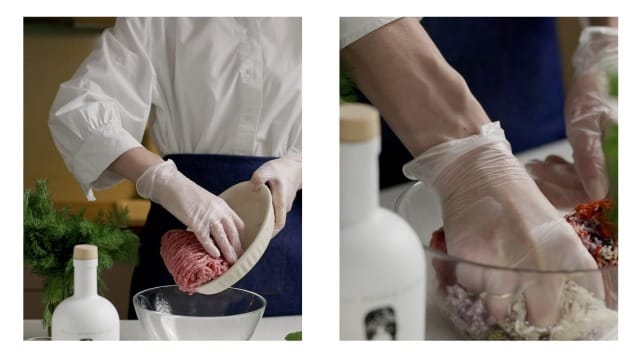
The Greek interpretation of dolmades highlights the Mediterranean emphasis on fresh, seasonal ingredients and communal dining. Dolmades are often enjoyed warm or cold and can be found in both everyday meals and festive occasions. Their popularity has led to a wide array of stuffing ingredients, reflecting the local flora and culinary influences. They are often prepared in large batches, shared with family and friends, and feature prominently in Greek restaurants around the world. They continue their tradition of more than two millennia as a symbol of Greek hospitality.
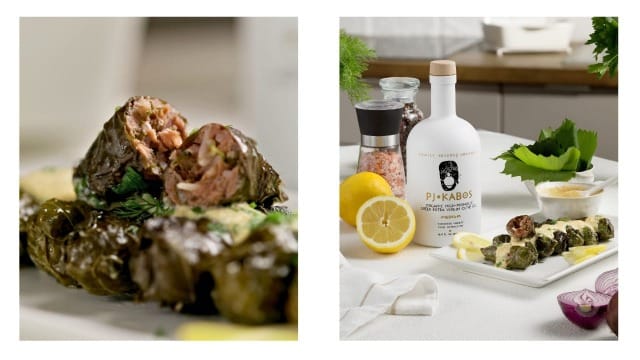
Recipe: Stuffed Grape Leaves
Meat—Main dish or appetizer; Serves: About 30; PJ KABOS Extra Virgin Olive Oil to use: Family Reserve Organic Medium
Ingredients
For the filling:
- 2 lbs grape leaves, fresh (when in season) or from a jar
- 1 pound beef, ground (lamb or chicken or pork may also be used)
- ¼ cup rice, basmati (or whichever is preferred)
- ⅓ cup parsley, finely chopped
- 2 medium onions, finely chopped
- 1 egg, separated
- ⅛ teaspoon salt
- ⅛ teaspoon pepper
- 3 tablespoons PJ Kabos Extra Virgin Olive Oil (FRM), for coving the bottom of the cooking pot
- 1 cup PJ Kabos Extra Virgin Olive Oil, for pouring over the stuffed grape leaves
- 3 tablespoons PJ Kabos Extra Virgin Olive Oil, for drizzling over the leaves when serving
- 1 lemon, juice
- 1 lemon, sliced
- warm water, enough to cover stuffed vine leaves in the pot
Total amount of PJ Kabos Extra Virgin Olive Oil (Family Reserve Organic Medium) used: approximately 1⅓ cups
For fresh vine leaves
- ½ cup salt
- 1 big pot of boiling water
- ice cubes
Preparation
If using fresh vine leaves: The leaves must be blanched in order to soften them and to lock in the nutrients and flavors. Fill a large pot with water, add salt and bring to boil. While waiting for the water to boil, run the fresh grape leaves under a shower of cold water to remove any dirt that might be clinging to them. Fill a bowl with cold water and ice cubes in which to dunk the leaves after their boiling bath (this stops the cooking process).

Blanching the leaves: One by one, carefully place the vine leaves in the boiling, salted water until several are boiling together. The leaves float so after about 2 to 3 minutes turn the leaves over so that both sides are immersed in the boiling water, a total of about 6 minutes, or until the leaves soften. With a perforated spoon, carefully remove from the boiling water and place in the iced water to stop the cooking process. Do this with all the leaves. Then place the leaves in a colander to drain.
If using vine leaves that have been preserved in a jar: Carefully remove the rolled-up leaves from the jar and taking them by their short stems open and separate each one, taking care not to tear them. (Note: Some leaves will get torn but don’t discard them; they will be used to line the bottom of the pot and the top layer of stuffed leaves.) Fill a bowl with water and let the leaves soak, about 10 minutes, to remove some of the brine that was used to preserve them. Rinse and drain. (Note: They don’t have to be totally dry.)
For the filling: In a bowl mix together the beef, rice, parsley, onions, egg white, salt and pepper.
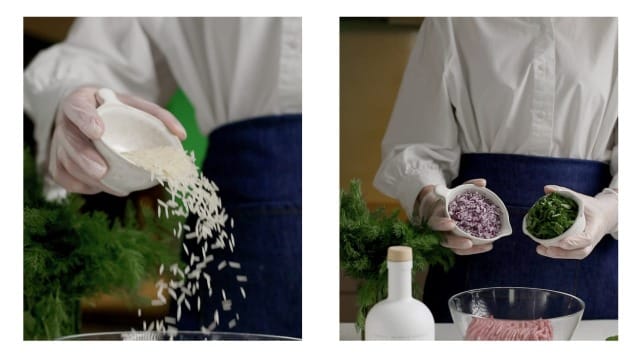
Into a wide pot pour 3 tablespoons PJ Kabos Extra Virgin Olive Oil. Line the bottom of the pot—3 leaves thick—and a bit up the sides of the pot with the torn or too small grape leaves. Set aside some leaves for covering the top layer of the stuffed grape leaves.
For assembling the stuffed grape leaves: Cut a 2 foot long section of bake paper. Place it on your favorite work surface and place 6 to 8 leaves, shiny side down, upon it. Take a heaping teaspoon of filling and place it near the top, in the middle of the leaf (on the dull, vein side). Fold the 2 upper sides of the leaf over it—the right and left side—then roll downwards folding more as you go, as necessary. It really is that simple! The leaves shouldn’t be rolled too tightly nor too loosely, just use your common sense and you will have a nicely rolled foodie “work of art!” And it’s something the kids or grandkids can do, too!
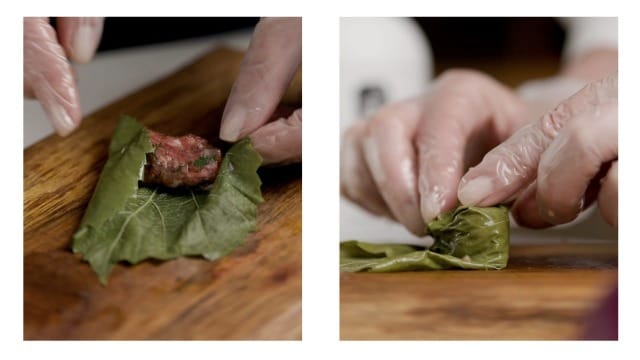
As you finish with each stuffed leaf place side by side in the pot. You may make several layers within the pot, as needed by the amount of leaves rolled and the size of your pot. When finished with the last roll, cover the top layer with the set aside leaves (or alternatively, use lemon slices as in the video), pour 1 cup of PJ Kabos Extra Virgin Olive Oil over it all, fill the pot with enough warm water to cover the stuffed vine leaves, then cover the leaves with a heavy, ovenproof dish (this is necessary to prevent the stuffed grape leaves from “dancing” in the pot and coming apart). Simmer on the stovetop for 1 hour, or until the leaves are tender. There should be at least 1½ cups of broth left in the pot (this is needed for the avgolemono—egg-lemon—sauce.) Remove from the fire. Remove the plate from the pot.
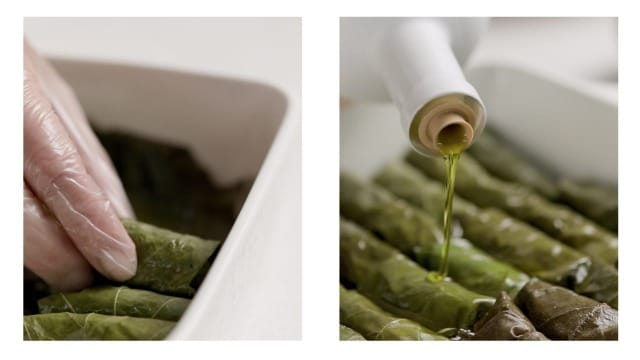
For the avgolemono—egg-lemon—sauce: In a small bowl, beat the egg yolk, add the lemon juice, then using a ladle, slowly, while continuously beating the egg/lemon mixture—so that the egg doesn’t curdle—add 1½ cups very hot broth from the stuffed vine leaves. Pour the avgolemono sauce over the stuffed grape leaves and gently shake the pot around over a low fire to thicken the sauce and mix it all together.
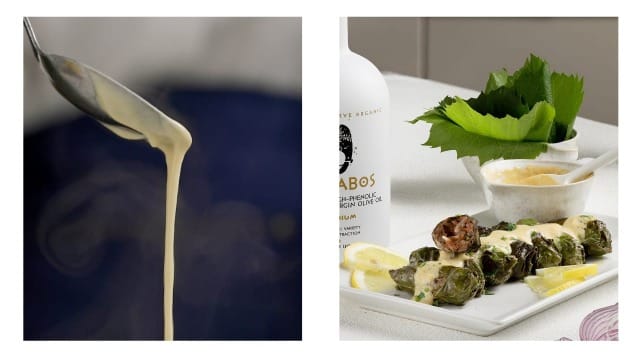
This may be eaten immediately as a main dish with a side of yogurt and a couple of olives or made two days ahead to serve as an appetizer at a party. It can be eaten hot, at room temperature or even cold. Drizzle PJ Kabos Extra Virgin Olive Oil (Family Reserve Organic Medium) and a little bit of salt over the stuffed grape leaves before serving.
Serves: Depending on the size of the leaves and the amount of stuffing used for each leaf this recipe makes about 30 stuffed vine leaves; if you require more, simply double the recipe...and make a party of rolling the leaves—and then eating them!
Please see recipe video for Dolmades at our sister site, pjkabos.com.
Fresh Harvest 2024/25
High-Phenolic Extra Virgin Olive Oil
from PJ KABOS
PJ Kabos Family Reserve Organic—Phenolic Shot
(Gold Bottle)
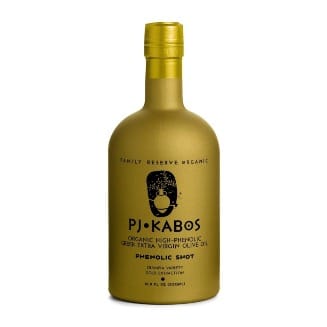
PJ Kabos Family Reserve Organic—"Phenolic Shot," is an award-winning extra virgin olive oil with possibly the highest phenolic content available in a true extra virgin olive oil today. Its intense bitterness and pungency clearly reflect the activity of these polyphenols. Meant to be taken as a shot or may be drizzled over salads, roasted vegetables, toast, fava, etc. to amplify both flavor and health benefits.
PJ Kabos Family Reserve Organic—Robust
(Black Bottle)
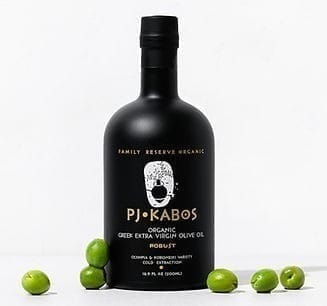
PJ KABOS Family Reserve Organic - Robust, is an extra virgin olive oil that is very high in polyphenols and adds depth, character and great health benefits to every meal.
PJ Kabos Family Reserve Organic—Medium Taste
(White Bottle)
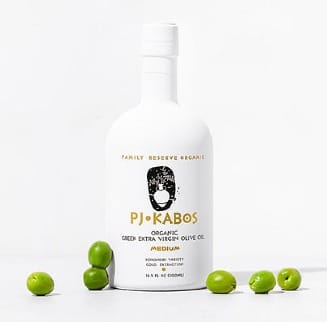
PJ KABOS Family Reserve Organic - Medium, is an extra virgin olive oil that is high in polyphenols and adds a lovely taste and great health benefits to every meal.
PJ Kabos Family Reserve—Medium Taste
(White Tin)
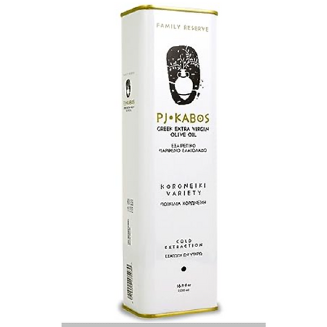
PJ KABOS Family Reserve - Medium, is an extra virgin olive oil in an easy-to-store tin that is high in polyphenols and adds a lovely taste and great health benefits to every meal.
Please enjoy having a look around our websites, pjkabos.com and oliveoil.com, as well as our Amazon Store for more about our many high-phenolic olive oils, recipes, history, etc. And follow along with us on Instagram for photos concerning olive oil production, our groves in Greece, articles about olive oil, family history and more.
PJ Kabos High-Phenolic Extra Virgin Olive Oil: Your Trusted Oil, Straight from Our Table to Yours.


